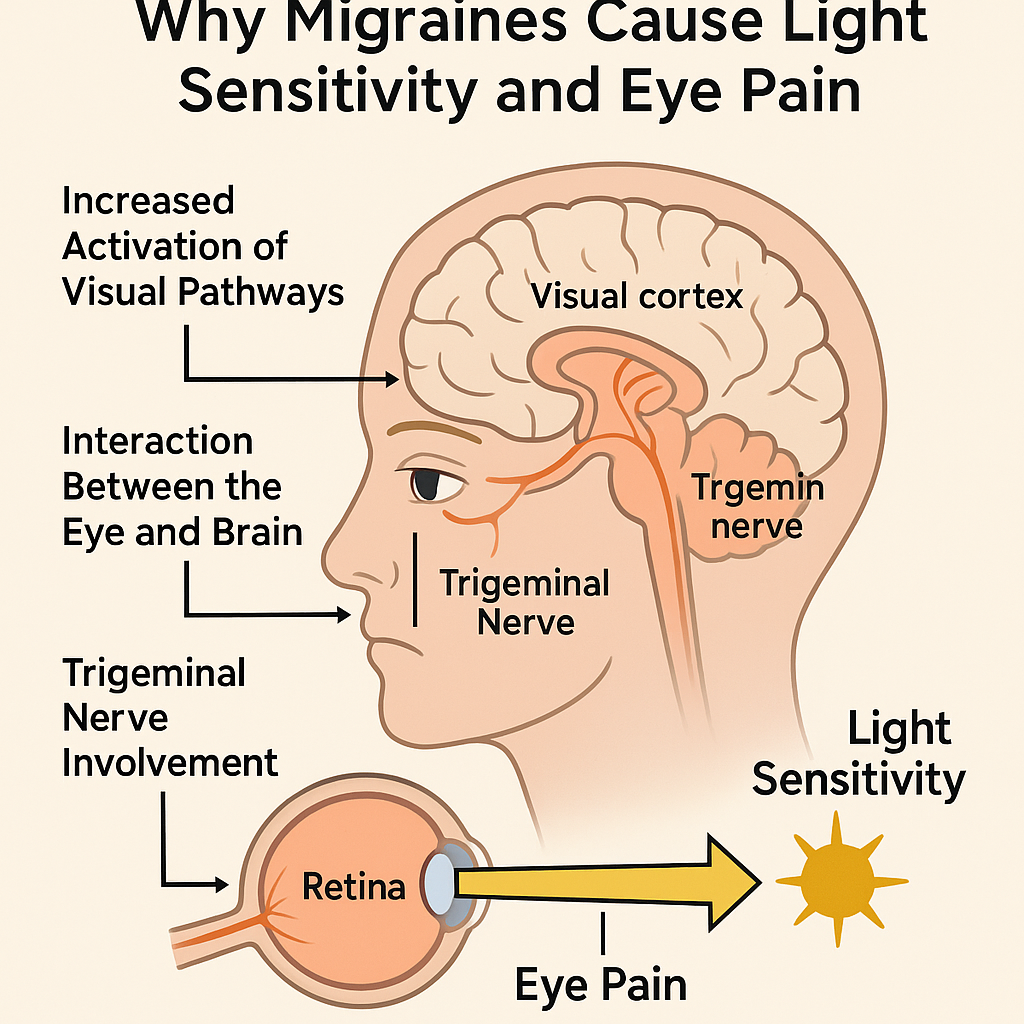
Why Migraines Cause Light Sensitivity and Eye Pain: Understanding the Neurological Link
Share
Migraines are more than just bad headaches—they’re a complex neurological condition that can impact nearly every aspect of your sensory experience. Two of the most common and disruptive migraine symptoms are photophobia (light sensitivity) and eye pain. But why do these symptoms occur, and what’s happening in the brain when they do?
Let’s dive into the science behind these troubling symptoms to better understand the connection between migraines, light, and the eyes.
The Brain's Hyperactive State During a Migraine
Migraines are believed to stem from abnormal brain activity that affects nerve signaling, chemicals, and blood vessels. One key player is the trigeminovascular system, which includes the trigeminal nerve—a major pain pathway that innervates parts of the face, including the eyes and forehead.
During a migraine attack, this system becomes sensitized and overactive. This leads to inflammation and the release of chemicals like calcitonin gene-related peptide (CGRP), which amplify pain signals. As a result, even normally non-painful stimuli—like light—can become intensely uncomfortable.
Why Light Sensitivity Happens
Light sensitivity, or photophobia, is extremely common during migraines. Researchers believe this symptom arises from how visual input is processed in a sensitized brain.
Here’s how it works:
-
Increased Activation of Visual Pathways
During a migraine, the brain's visual cortex—responsible for processing visual information—can become hyperexcitable. Light entering the eyes sends stronger-than-normal signals to this area, which the brain interprets as pain or discomfort. -
Interaction Between the Eye and the Brain
The retina in your eye contains light-sensitive cells that send signals to the brain. In people with migraines, these signals travel through a pathway that interacts with the thalamus (a relay station in the brain) and ultimately reach pain centers. This cross-talk can make light feel painful. -
Pupillary Response Dysfunction
Studies also show that people with migraines may have an exaggerated pupillary response to light. This means that the eyes may not adjust to brightness properly, leading to strain and discomfort.
The Source of Eye Pain
Eye pain during a migraine isn’t always about the eyes themselves—it’s often referred pain.
Here’s why:
-
Trigeminal Nerve Involvement
The trigeminal nerve has branches that serve the eye area. When it becomes inflamed or overactivated during a migraine, it can cause a deep, throbbing pain behind or around the eyes. -
Sinus-Like Symptoms
Some migraines cause sinus-like pressure, which can feel like eye strain or pain. However, this is usually part of the migraine process, not an actual sinus issue. -
Ocular Migraine
In some cases, people experience a type of migraine called an ocular migraine, which involves visual disturbances (like flashing lights or blind spots) and may cause eye pain or visual strain—even without a headache.
Managing Light Sensitivity and Eye Pain
While you can’t always prevent migraines, you can manage the symptoms:
-
Use FL-41 glasses to reduce photophobia during an attack.
-
Dim the lights and avoid screen time when a migraine is building.
-
Migraine-specific medications like triptans or CGRP inhibitors may reduce the severity of all symptoms, including eye-related discomfort.
-
Preventive strategies like regular sleep, hydration, and stress management can also reduce migraine frequency and intensity.
Final Thoughts
Migraines are a neurological storm that affects far more than just your head—they hijack your senses, especially sight. Light sensitivity and eye pain occur because the migraine brain processes visual information in an abnormal, exaggerated way, often through pathways tied directly to pain centers.
Understanding this connection not only helps demystify the symptoms, but also empowers sufferers to find better ways to cope and seek targeted treatments.
